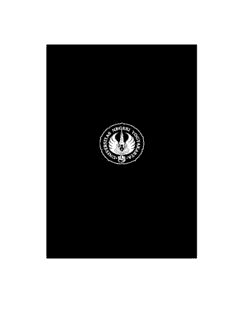
the use of talking chips strategy to improve speaking ability of grade xi students of sman 1 ... PDF
Preview the use of talking chips strategy to improve speaking ability of grade xi students of sman 1 ...
THE USE OF TALKING CHIPS STRATEGY TO IMPROVE SPEAKING ABILITY OF GRADE XI STUDENTS OF SMAN 1 PENGASIH IN THE ACADEMIC YEAR OF 2013/ 2014 A THESIS Presented as partial fulfillment of the requirements for the attainment of the Sarjana Pendidikan Degree on the English Language Education Hertati Mukadimah 10202241048 ENGLISH LANGUAGE EDUCATION DEPARTMENT FACULTY OF LANGUAGES AND ARTS STATE UNIVERSITY OF YOGYAKARTA 2014 DEDICATION I lovingly dedicate this thesis to: My parents My grandparents v MOTTOS “Be patient and be grateful.” -Mom- “I may not be the best, but I’m definitely not like the rest.” vi ACKNOWLEDGMENTS Alhamdulillahirobbil’alamin, all praises to the Almighty Allah SWT because of his blessings and guidance I could finally finish my thesis to attain the degree of Sarjana Pendidikan in English Education Department. First of all, I would like to extend my deepest gratitude to Dra. Jamilah, M.Pd. for her guidance and feedback throughout the stages of thesis writing. Her advice, correction, patience, and willingness to assist greatly contributed to the completion of my thesis. I also greatly appreciate the principal of SMAN 1 Pengasih, Drs. Ambar Gunawan, for giving permission to conduct this research in the school he leads. Many thanks and appreciations also go to the English teacher, Dra. Risbatin Kiyah, for her cooperation, suggestions, and help during the research. Great thanks are also given to the students of XI IPA 1 class for being cooperative to be my correspondents. My gratitude is devoted to my parents, especially my mother, a real wonder woman in my life. Thank you for the great support, belief, patience, and life lesson you always give to me. I would also thank my family for the support. To my best friends (Puji, Prita, Okta, Evanthe, Inka, Mbak Erni, Mbak Karim), thank you for the support even though time and distance made us apart. BABO members (Arintika, Evi, Galih, Arini) thanks for the times we shared. I hope our friendships would last forever. My classmates in PBI C class (Esthi, Afi, Cintiya, Ana, Risang, Orin, Kiki, Meta, Bayu, Nata), thank you for the beautiful togetherness. Last but not least I would also thank my home mates in Kos Sagan CT V/66 and Kos Narada 14B, especially Nyai Sayidah and Kak Nofi, thank you for the support. My thanks also go to those who support me whom I cannot write their names one by one. vii Finally, I hope that this thesis will be useful for the readers. However, I realize that this thesis is far from being perfect. Therefore, any criticisms, ideas, and suggestions for the improvement of this thesis are greatly appreciated. Yogyakarta, September 19th, 2014 Hertati Mukadimah viii TABLE OF CONTENTS Page TITLE PAGE ......…………………………………………………….……. i APPROVAL………………………………………………………….…...... ii RATIFICATION…………………………………………………….…...... iii PERNYATAAN ...…………………………………………………..…….... iv DEDICATIONS ...…………………………………………………….….... v MOTTOS .………………………………………………………………… vi ACKNOWLEDGEMENTS………………………………………………. vii TABLE OF CONTENTS…………………………………………………. ix LIST OF APPENDICES ....……………………………………………….. xii LIST OF TABLES ...……………………………………………………… xiii LIST OF FIGURES ....................................................................................... xiv LIST OF PICTURES .....………………………………………………...... xv ABSTRACT……………………………………………………………….. xvi CHAPTER 1: INTRODUCTION A. Background of the Problem…………………………………………... 1 B. Identification of the Problem…………………………………………. 4 C. Delimitation of the Problem………………………………………….. 7 D. Formulation of the Problem………………………………………...... 7 E. Objective of the Study ……...……………………………………....... 8 F. Significance of the Study…………………………………………...... 8 CHAPTER II: LITERATURE REVIEW AND CONCEPTUAL FRAMEWORK A. Literature Review…………………………………………………….. 9 1. The Nature of Speaking……………………………………............... 9 a. Definitions of Speaking…………………..………………............ 9 b. Functions of Speaking…………………………………………..... 10 ix c. Aspects of Speaking………………………………….................... 12 d. Micro- and Macroskills of Speaking…………………………...... 14 e. Types of Classroom Speaking Performance .................................. 15 f. Difficulties in Speaking …….......................................................... 16 2. Teaching Speaking ……………………………………………….... 18 a. Principles for Designing Speaking Technique ................................ 18 b. Teaching Speaking for Senior High School .................................... 22 c. Teacher’s Roles during the Speaking Lesson ................................. 24 d. P-P-P ............................................................................................... 25 e. Assessing Speaking ……………………………………………... 26 3. Cooperative Learning……………………………………………….. 29 a. Definition of Cooperative Learning …..……………………….... 29 b. Elements of Cooperative Learning………..………....................... 30 c. Advantages of Cooperative Learning ............................................. 34 4. Talking Chips Strategy ........................................................................ 36 a. The Nature of Talking Chips Strategy ............................................ 36 b. The Advantages of Talking Chips Strategy .................................... 37 c. The Steps of Talking Chips Strategy .............................................. 38 B. Reviews of Related Studies………………………………………....... 39 C. Conceptual Framework……………………………………………..... 40 CHAPTER III: RESEARCH METHOD A. Research Design ………………………………………………............ 42 B. Research Setting ……………………………………………................ 44 C. Research Subject ………………………………………........................ 44 D. Data Collection……………………………………………………...... 45 1. Types of Data……………………………………………………...... 45 2. Data Collection Techniques and Instruments …………………….... 45 3. Data Analysis Technique………………………………………….... 46 4. Research Validity and Reliability ……………………….………..... 47 E. Research Procedure ......…………………………………………........ 49 x
Description: